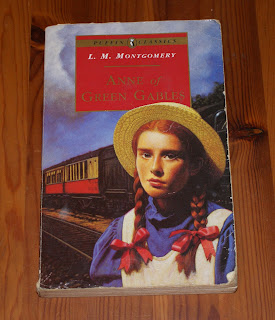Although it is always wise to avoid being drawn to a book by
its cover there is something hypnotic about the picture of the young girl on The Passage by Justin Cronin.
The child, meant to represent the book’s main character Amy Harper Bellafonte, stares at you through the strands of hair which are covering half her face. The freckles on her cheeks and nose evoke the innocence of childhood, and she is unsmiling which at first glance suggests that she is afraid of you.
Yet it is her pupil, a black colourless circle that locks into you from across a crowded room of books, which suggests otherwise.
Needless to say before I turn off the light at night and go to bed, I turn the book cover over...
Within the first few pages of The Passage you are greeted with accolades shining down on Justin Cronin’s gifts as a writer, even counting one from master of contemporary horror himself, Mr. Stephen King. Yet discounting all the hype and the Waterstones bargain price tag of £2.99 it would be wrong to describe this book as anything else but wonderful.
Set in the hazy heated landscape of North America The Passage is the perfect blend of Mary Shelley’s Frankenstein, Richard Matheson’s I am Legend and every horror film and survivalist colony fiction of the twentieth century.
Justin Cronin cleverly plays with the modern trend in horror of making nightmare monsters which crawl under your bed scientifically viable by giving them biological legs to stand on and walk the earth. Without giving too much away, it seems the US government have been very very naughty.
As you’re reading there are parts of The Passage that feel familiar, almost knowable, yet being that Cronin’s creation is a product of some of the best horror fiction written this only makes it deliciously rewarding and in turn the book delivers everything you would want from a modern classic of the genre.
What also drives this novel along is Justin Cronin’s dedication to every character. Here he takes notes from King when even considering minor characters; each is given their own back-story, an ex-wife perhaps or hidden past, habits and dreams. This makes it hard to disconnect from the book when the terror grows in force and devours its world.
Simply put The Passage is the ideal companion to the sunny days which have been creeping in towards the beginning of May.
Read, read, read and let the comfort of your home fall away.
The child, meant to represent the book’s main character Amy Harper Bellafonte, stares at you through the strands of hair which are covering half her face. The freckles on her cheeks and nose evoke the innocence of childhood, and she is unsmiling which at first glance suggests that she is afraid of you.
Yet it is her pupil, a black colourless circle that locks into you from across a crowded room of books, which suggests otherwise.
Needless to say before I turn off the light at night and go to bed, I turn the book cover over...
Within the first few pages of The Passage you are greeted with accolades shining down on Justin Cronin’s gifts as a writer, even counting one from master of contemporary horror himself, Mr. Stephen King. Yet discounting all the hype and the Waterstones bargain price tag of £2.99 it would be wrong to describe this book as anything else but wonderful.
Set in the hazy heated landscape of North America The Passage is the perfect blend of Mary Shelley’s Frankenstein, Richard Matheson’s I am Legend and every horror film and survivalist colony fiction of the twentieth century.
Justin Cronin cleverly plays with the modern trend in horror of making nightmare monsters which crawl under your bed scientifically viable by giving them biological legs to stand on and walk the earth. Without giving too much away, it seems the US government have been very very naughty.
As you’re reading there are parts of The Passage that feel familiar, almost knowable, yet being that Cronin’s creation is a product of some of the best horror fiction written this only makes it deliciously rewarding and in turn the book delivers everything you would want from a modern classic of the genre.
What also drives this novel along is Justin Cronin’s dedication to every character. Here he takes notes from King when even considering minor characters; each is given their own back-story, an ex-wife perhaps or hidden past, habits and dreams. This makes it hard to disconnect from the book when the terror grows in force and devours its world.
Simply put The Passage is the ideal companion to the sunny days which have been creeping in towards the beginning of May.
Read, read, read and let the comfort of your home fall away.











